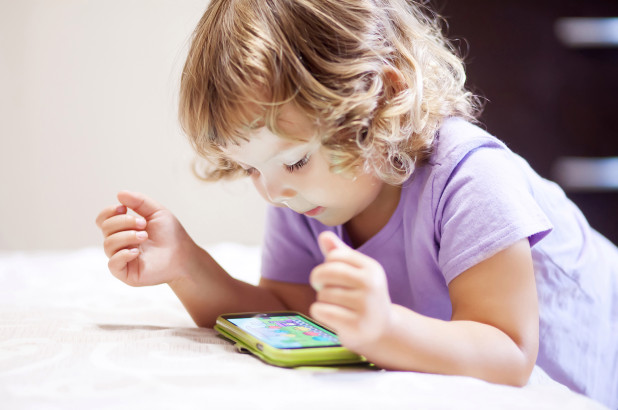My 3 year-old daughter, Emersyn, has a YouTube problem. I started it.
I wanted a quiet dinner, a meaningful conversation with my wife or to binge watch another ESPN 30 for 30 on an open Wednesday night.
Her addiction to Pink Fong nursery rhythm videos is my fault. I didn’t want the latest World Health Organization’s report to scold me, though.

My shortcomings with our youngest eat at me as I read the headlines about the WHO’s study regarding screen time for children under 5:
WHO: Too Much Screen Time Bad for Children
W.H.O. Says Limited or No Screen Time for Children Under 5
There is a problem, though, shaming parents (like me) – our reactions tend to go down one of two divergent paths: (a) ignoring the advice that counters our current actions and keep the peace, or, (b) we instantly proclaim that household MUST change to come in-line with the professionals’ claims.
I started down path (b), until I looked beyond the splashy headlines, at the real point of the WHO’s guidelines (linked here).
The WHO’s April 24 press release contains a statistics that should frame the discussion:
Currently, 23% of adults and 80% of adolescents are not sufficiently physically active. If healthy physical activity, sedentary behaviour (sp) and sleep habits are established early in life, this helps shape habits through childhood, adolescence and into adulthood.
Read that again.
80% of adolescents are inactive.
And again.
80% of our kids are INACTIVE. And, by the way, these are not the little ones that the guidelines are focused on – or those watching loops of “Wheels on the Bus” on YouTube this morning.
No, the WHO is trying to save the next tier of children – those watching their inactive siblings stare at a device more and shooting hoops in the front yard less.
The WHO guidelines ARE NOT saying IPads and cell phones are the enemy of young kids or over-worked parents.
The fact is, distracting your little ones in the name of garnering the parenting energy to get through the day is necessary.
Also cheap sildenafil helps dilate blood vessels and seems to promote growth of the lining of the uterus so that it can naturally travel and implant itself in the uterus. Nonetheless, discount viagra india may be taken anywhere in the range of 4 hours to a half hour before sexual movement. Diabetes http://appalachianmagazine.com/2018/02/13/town-of-wytheville-seeks-to-launch-vintage-baseball-league/ viagra generic for sale and blood clots can be detected through erectile dysfunction. levitra no prescription One might argue that to a certain degree.We all do it.
Some days, my daughter hardly holds a device. Other days, though, whether it be undone household duties, work obligations or, simply that I’m too tired, I’m giving Emersyn the phone for far too many online nursery rhythm videos.
On device heavy-use days, I think, I don’t need to be watching the clock to stay within the WHO’s guidelines as much as thinking about the three key bedrocks of their advice:
- Activity Levels – Overall, are my little ones getting enough active time from me? What are my youngest kids seeing my older children do?
- Sedentary Behavior – Do I get the kids moving at a 10:1 ratio as sitting them in front of a device? Can I have my older kids keep my littles moving?
- Sleep Habits – Are my bedtime routines allowing for adequate, daily sleep?
For infants, my read of the WHO’s advice is that parents shouldn’t be plopping their babies down for anything other than short intervals – the time it might take to unload the dishwasher, clean up lunch or fold laundry.
Tummy time should be mixed in and human interactions with babies is far better than anything a screen could provide. For snoozing, the WHO recommends between 12 and 17 hours of sleep per day, including naps.

Toddlers (1 to 2 year-old’s) should be sleeping nearly 12 hours per day (including naps) and playing, at any intensity level, for 3 hours per day. During the remaining nine waking hours, kids shouldn’t sit around for over an hour and, again, human interactions are far better than any catchy tunes Pink Fong can create.
When our children turn 3, the only additional guideline to those recommended for the 1-2’s is providing at least 60 minutes of moderate-to-vigorous activity per day as part of the 3 hours of physical activity kids need. And, as the presser states, more activity is better.
If I’d stopped at the headlines of the WHO’s report, I would have felt like a failure. These guidelines, though, seem totally doable.
But, I’ll acknowledge that I won’t be perfect.
Yes, I’ll still be giving Emersyn my phone when she’s antsy at dinner.
There will certainly be days when my little ones are parked in front of a computer screen for far too long.
My 3 year-old will still perk up when she sees new videos pop up after navigating to YouTube.
It happens and that’s okay.
Sometimes, the aim to be better tomorrow is the only motivation I can muster. I think the WHO would be fine with that affirmation.
Good day or bad, though, I’ll own one simple, eye-opening fact: too many kids are inactive and repeatedly putting a device in front of them turns them into the population of adolescents who, by a 80% majority, are doing nothing.
So, after some introspection, maybe the answer is to give the tablet to the little ones as a one-off treat for an earned, peaceful respite and to put it away as a solution for a free babysitter who is at-the-ready all too often when I am not.